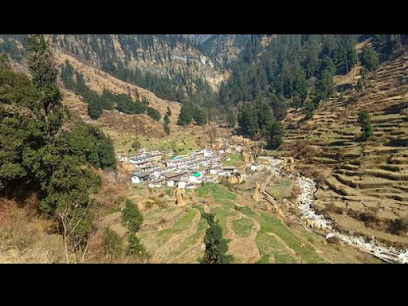
Discover the Enchanting Valley of Flowers National Park
Explore the breathtaking beauty of Valley of Flowers National Park, a UNESCO World Heritage Site, renowned for its stunning alpine flora and majestic landscapes.
Nestled in the Western Himalayas, the Valley of Flowers National Park is a UNESCO World Heritage Site renowned for its stunning biodiversity and breathtaking landscapes. This vibrant park, celebrated for its meadows of endemic alpine flora, attracts nature lovers and adventure seekers alike, offering an unparalleled experience of trekking through its picturesque trails surrounded by majestic mountains.
A brief summary to Valley of Flowers National Park
- Uttarakhand, 246443, IN
- +911352559898
- Visit website
Local tips
- Visit during the monsoon season from June to September for the best flower blooms.
- Start your trek early in the morning to avoid crowds and enjoy a peaceful experience.
- Wear comfortable trekking shoes and carry water and snacks, as facilities are limited inside the park.
- Check the weather forecast before your visit, as conditions can change rapidly in the mountains.
- Respect the natural environment; do not pick flowers or disturb wildlife.
Getting There
-
Car
If you are traveling by car, the best route is to start from the nearest major city, which is Rishikesh. From Rishikesh, head towards Joshimath via NH58. The distance is approximately 270 km, and the journey will take around 10 to 12 hours, depending on road conditions. Once you reach Joshimath, you can park your car there. From Joshimath, take a taxi or local bus to Govindghat, which is about 20 km away. Taxis usually charge around ₹500-₹800, while buses may cost around ₹50-₹100. After reaching Govindghat, you'll need to trek approximately 13 km to reach Ghangaria, the base for Valley of Flowers. This trek takes about 6-7 hours and is moderately challenging.
-
Public Transportation
If you prefer public transportation, you can take a bus from major cities like Dehradun or Haridwar to Rishikesh. From Rishikesh, take a bus or shared taxi to Joshimath. The bus fare from Dehradun to Rishikesh is about ₹50-₹100, and from Rishikesh to Joshimath, it costs approximately ₹500-₹700. Upon arriving in Joshimath, follow the same route as mentioned above to reach Govindghat by taxi or local bus, and then trek to Ghangaria.
-
Trekking
After reaching Ghangaria, you will need to trek to the Valley of Flowers National Park. The trek from Ghangaria to the park entrance is about 3 km and typically takes around 1-2 hours. There is an entry fee of approximately ₹150 for Indian citizens and ₹600 for foreign nationals. Ensure you carry sufficient water, snacks, and a good pair of trekking shoes, as the trail can be steep and rocky.
Discover more about Valley of Flowers National Park
Iconic landmarks you can’t miss
Hotel Auli D - Hotel In Joshimath
19.6 km
Discover comfort and serenity at Hotel Auli D in Joshimath, your perfect base for exploring the Himalayan wonders and sacred sites.

Auli Inn
19.9 km
Experience the charm of the Himalayas at Auli Inn – a serene resort hotel in Joshimath, perfect for adventure and relaxation.

Faraway Cottages, Auli
21.2 km
Discover the tranquil beauty of Faraway Cottages, a perfect retreat in Auli, Uttarakhand, where nature meets comfort.

Hotel Manik Resort Auli
21.3 km
Discover the beauty of the Himalayas at Hotel Manik Resort Auli, your serene retreat in the heart of Uttarakhand's majestic mountains.

The Royal Village
21.5 km
Experience the enchanting beauty and adventure of The Royal Village in Auli, Uttarakhand, a premier resort hotel for all travelers.

Casa Himalaya, Auli
21.5 km
Discover adventure and tranquility at Casa Himalaya, Auli - a premier ski resort in the heart of Uttarakhand's breathtaking Himalayas.

Ski resort GMVN Auli
21.5 km
Discover Auli, a stunning ski resort in the Himalayas, offering thrilling winter sports and breathtaking views of the Nanda Devi peaks for an unforgettable experience.

Ski & Snow Cliff Top Club Holiday Resort at Auli, Uttarakhand
21.8 km
Discover the ultimate alpine retreat at Ski & Snow Cliff Top Club Holiday Resort in Auli, Uttarakhand, where luxury meets adventure in the heart of the Himalayas.

Ski Resort Auli
22.3 km
Experience the thrill of skiing and the beauty of the Himalayas at Auli Ski Resort, a top destination for winter sports enthusiasts in India.

Auli Tourism
23.2 km
Experience the breathtaking beauty and thrilling adventures of Auli, the Snow Paradise of India, nestled in the majestic Himalayas.

कुमाऊँ हिमालय
40.5 km
Discover the breathtaking beauty and adventure of the Kumayun Himalayas in Chamoli, Uttarakhand—a paradise for nature lovers and thrill-seekers.

Flowers Valley
70.1 km
Explore the serene landscapes and vibrant flora of Flowers Valley, a hidden gem in Uttarakhand perfect for nature lovers and adventure seekers alike.
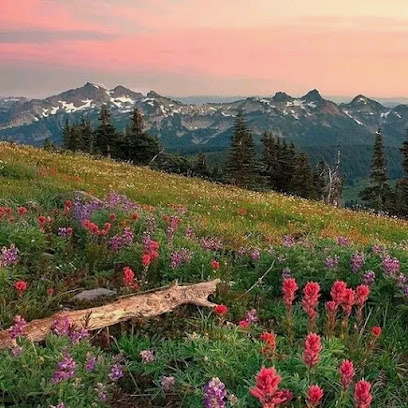
Experience The Himalayas
70.3 km
Embark on a breathtaking adventure in the Himalayas with Experience The Himalayas, where nature meets spirituality in stunning landscapes.

Lesser Himalaya
89.2 km
Discover the breathtaking beauty and adventure of the Lesser Himalaya in Uttarakhand, a hidden gem for nature lovers and trekkers.

Geographical Society of Central Himalaya
95.6 km
Explore the rich geographical heritage of the Central Himalayas at the Geographical Society of Central Himalaya in Uttarakhand, India.

Unmissable attractions to see
Valley of Flowers, 2 Km
2.0 km
Explore the enchanting Valley of Flowers, a UNESCO World Heritage site in Uttarakhand, bursting with vibrant flora and breathtaking landscapes.

Valley of Flowers, The Paradise on Earth
2.6 km
Explore the breathtaking Valley of Flowers in Uttarakhand, a UNESCO World Heritage Site known for its vibrant blooms and stunning landscapes.

River View Point Bridge
11.0 km
Experience the breathtaking beauty of Uttarakhand at River View Point Bridge, a scenic gem perfect for photography, picnics, and peaceful retreats.

Shree Badrinath Temple
11.3 km
Explore the spiritual heart of the Himalayas at Shree Badrinath Temple, a revered pilgrimage destination surrounded by breathtaking natural beauty.

Keshav Prayag
11.8 km
Explore the tranquil beauty of Keshav Prayag, a hidden hiking gem in Uttarakhand, offering breathtaking landscapes and serene natural surroundings.

Satopanth Glaciers, chamoli district, uttarakhand
11.8 km
Explore the breathtaking Satopanth Glaciers in Uttarakhand, a hiker's paradise offering stunning views and unforgettable Himalayan adventures.

The Cave of Veda Vyasa
11.9 km
Explore the Cave of Veda Vyasa, a sacred site in Uttarakhand that combines spiritual significance with stunning natural beauty, perfect for every traveler seeking enlightenment.
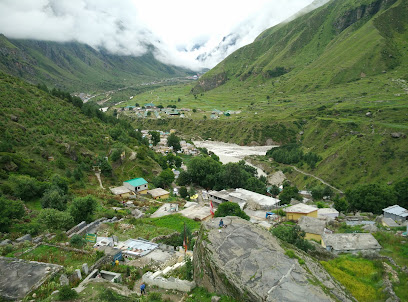
Bheem Pul, Mana
12.1 km
Discover Bheem Pul in Mana, Uttarakhand—a sacred bridge steeped in legends, surrounded by Himalayan beauty and spiritual serenity.

Origin of Saraswati River
12.2 km
Discover the tranquil beauty and spiritual significance of the Origin of the Saraswati River, a must-visit pilgrimage site in Uttarakhand, India.

Kagbhusandi lake
12.2 km
Discover the serene beauty and spiritual essence of Kagbhusandi Lake, a hidden paradise in the heart of Uttarakhand's mountains.

Govind Ghat
12.9 km
Experience the breathtaking beauty and spiritual richness of Govind Ghat, the gateway to the Valley of Flowers in Uttarakhand.

Vasudhara Falls
16.3 km
Discover the breathtaking beauty of Vasudhara Falls in Uttarakhand, where nature's grandeur meets serene tranquility.

Mana Peak
17.1 km
Explore the breathtaking Mana Peak in Uttarakhand, where adventure meets tranquility amidst the majestic Himalayan landscape.
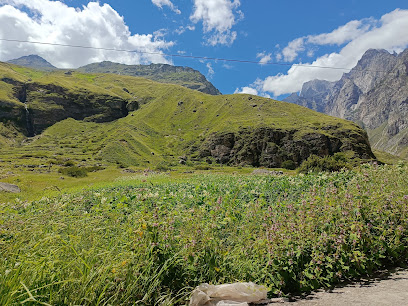
Nanda Devi Wildlife Sanctuary
17.1 km
Explore the breathtaking landscapes and diverse wildlife of Nanda Devi Wildlife Sanctuary, a UNESCO World Heritage Site in the heart of the Himalayas.

Local Waterfall
17.6 km
Discover the serene beauty of the Local Waterfall in Uttarakhand, a breathtaking natural attraction that captivates every visitor with its stunning views.

Essential places to dine
Sardeshwari Restaurant
11.0 km
Experience the best of Indian cuisine at Sardeshwari Restaurant in Badrinath - where tradition meets taste.

Saket Restaurant
11.2 km
Experience authentic Indian flavors in Badrinath at Saket Restaurant - your perfect dining spot after temple visits.

Hotel Bhagat
12.7 km
Discover Hotel Bhagat: A welcoming restaurant and hotel offering delicious meals and cozy accommodations in the heart of Uttarakhand.

TWENTY 3RD FAST FOOD AND BAKERY
19.5 km
Experience delicious fast food and fresh bakery delights at Twenty 3rd Fast Food and Bakery in Joshimath – a culinary gem near Shri Narsingh Temple.

J.M.S Restaurant
19.5 km
Experience authentic local flavors at J.M.S Restaurant in Joshimath - A culinary treasure nestled in Uttarakhand's scenic beauty.
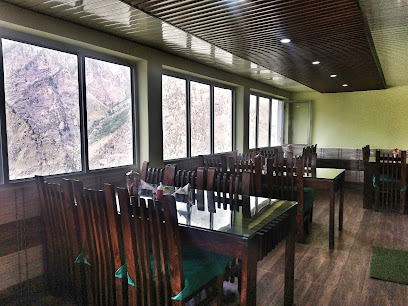
Chauhan's Diner
19.5 km
Discover authentic flavors at Chauhan's Diner in Joshimath - where Himalayan charm meets delightful cuisine.

Bawarchi the family restaurant joshimath
19.6 km
Experience authentic Indian flavors at Bawarchi the Family Restaurant in Joshimath - where delicious food meets warm hospitality.

Pizza Hap
19.6 km
Experience mouthwatering pizzas made with fresh local ingredients at Pizza Hap in Joshimath - a must-visit for every traveler.

Divine Restaurant
19.6 km
Experience authentic Indian cuisine at Divine Restaurant in Joshimath – where local flavors meet warm hospitality.

Auli 'D' Food Plaza
19.6 km
Experience authentic Indian cuisine at Auli 'D' Food Plaza in Joshimath—where every meal offers a taste of local culture amidst stunning mountain views.

Hotel Dronagiri
20.0 km
Discover exquisite local cuisine at Hotel Dronagiri in Joshimath – where every meal offers a taste of Uttarakhand's rich heritage.

Auli Snacks and Dhaba
20.6 km
Discover authentic Indian flavors at Auli Snacks and Dhaba amidst the breathtaking beauty of Uttarakhand's mountains.
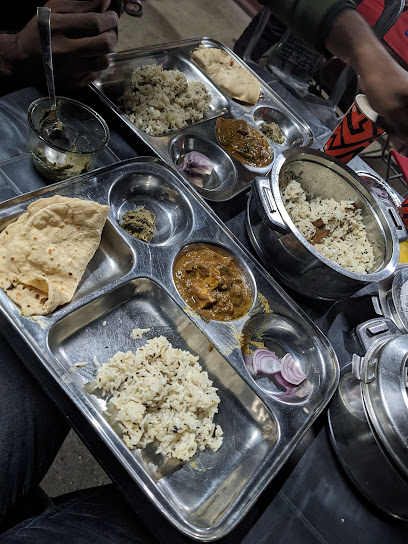
Best Hotel in Auli - Shail Shikhar Heritage Inn
21.3 km
Discover unparalleled comfort and stunning mountain views at Shail Shikhar Heritage Inn in Auli - your perfect getaway in Uttarakhand.

Snow view restaurant auli
21.3 km
Experience culinary bliss with stunning Himalayan views at Snow View Restaurant in Auli.

The Himalayan Resturant
21.4 km
Experience fast food like never before at The Himalayan Restaurant in Uttarakhand, where local flavors meet stunning mountain views.
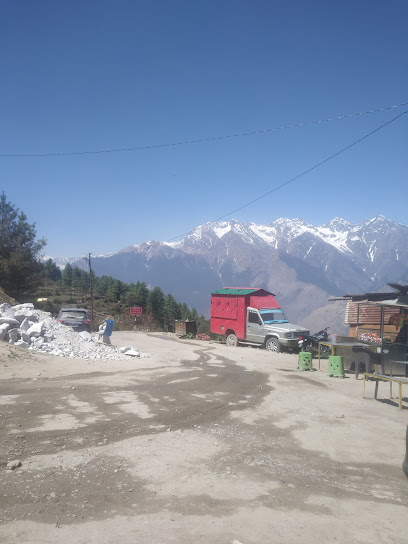
Markets, malls and hidden boutiques
Valley of Flowers
2.0 km
Discover the breathtaking beauty of the Valley of Flowers in Uttarakhand, where vibrant blooms and majestic landscapes create a paradise for nature lovers.

Valley of flowers checkpoint
2.7 km
Explore the breathtaking Valley of Flowers through its checkpoint, your gateway to a spectacular floral wonderland in the heart of Uttarakhand.

Camp valley of flowers Ghanghria
3.6 km
Discover the breathtaking beauty of Camp Valley of Flowers Ghanghria, a serene campground in Uttarakhand, perfect for nature lovers and adventure seekers.

Khampa Woollen Garments
11.2 km
Experience the rich heritage of Uttarakhand at Khampa Woollen Garments, where traditional craftsmanship meets modern shopping.

Chandan Coffee Centre Maana
11.6 km
Discover the charm of Chandan Coffee Centre Maana, where exquisite coffee meets breathtaking Himalayan views in a cozy atmosphere.

Himalaya Coffee Centre
11.8 km
Experience the tranquil charm of Himalaya Coffee Centre, where aromatic brews meet breathtaking Himalayan views.

Sleepwell
18.3 km
Discover unparalleled comfort at Sleepwell in Joshimath, where quality mattresses and stylish furniture meet exceptional service.

Sri Ram Store
19.6 km
Shop unique clothing and accessories at Sri Ram Store in Joshimath, where local fashion meets Himalayan charm.
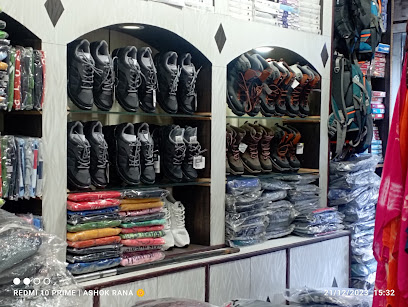
Shri badrinath fashion store readymade shop
19.6 km
Explore Shri Badrinath Fashion Store in Joshimath for a unique blend of traditional and modern clothing that captures the essence of Uttarakhand.

Hotel Saidham Joshimath
19.6 km
Discover the beauty and adventure of the Himalayas at Hotel Saidham Joshimath, your perfect getaway for skiing and relaxation.

Radhika collection
19.6 km
Discover unique clothing at Radhika Collection in Joshimath, where tradition meets modern style in the heart of Uttarakhand.

Shubham gift center
19.6 km
Discover unique souvenirs and local handicrafts at Shubham Gift Center in Joshimath, a must-visit for every traveler seeking authentic Uttarakhand treasures.

Auli 'D' Bakers
19.6 km
Discover Auli 'D' Bakers in Joshimath for a delightful array of fresh pastries and cakes, perfect for sweetening your Himalayan adventure.

Navneet Silori
19.6 km
Discover authentic local crafts and souvenirs at Navneet Silori, a vibrant store in Joshimath, Uttarakhand, showcasing the rich heritage of the Himalayas.

Living in Painting
19.7 km
Explore the vibrant world of local art and unique souvenirs at Living in Painting, a cultural gem in the heart of Joshimath, Uttarakhand.

Essential bars & hidden hideouts
Hotel Shyam Palace
3.0 km
Discover the charm of Hotel Shyam Palace in Ghangaria, your gateway to the majestic Himalayas and vibrant local cuisine.

KUBER ANNEX
3.2 km
Explore Kuber Annex in Ghangaria for a delightful dining experience infused with local flavors and hospitality amidst breathtaking natural beauty.

Hotel Preetam
3.3 km
Experience the perfect blend of comfort and local cuisine at Hotel Preetam in Ghangaria, Uttarakhand.

Vankatesh
10.7 km
Discover the flavors of Uttarakhand at Vankatesh, a top-rated restaurant in Badrinath offering a delightful range of Indian cuisine.

Braham Kamal Restaurant
10.8 km
Discover the flavors of Uttarakhand at Braham Kamal Restaurant, a family-friendly dining gem in the heart of Badrinath.

Mishra Restaurant
11.0 km
Experience authentic Indian cuisine at Mishra Restaurant, an essential stop for travelers in the sacred town of Badrinath.

पार्थ स्पेशल ( चौहान जनरल स्टोर & रेस्टोरेंट)
11.9 km
Discover the flavors of Uttarakhand at Paarth Special, a family-friendly restaurant and general store offering delicious local cuisine and warm hospitality.

Hotal New Gokul
11.9 km
Experience the authentic flavors of Uttarakhand at Hotal New Gokul, a charming restaurant in Pail Chak Bhyudar, perfect for culinary exploration.

Bolly vista family restaurant
11.9 km
Discover the taste of Uttarakhand at Bolly Vista Family Restaurant, where delicious food meets family-friendly hospitality.

CAFE BRO
11.9 km
Explore the flavors of Uttarakhand at Cafe Bro, a family-friendly restaurant offering a delightful menu and a cozy atmosphere for all ages.

The Bourbon Club N Lounge
19.5 km
Experience vibrant nightlife at The Bourbon Club N Lounge, a stylish bar in Joshimath, Uttarakhand, offering exquisite drinks and stunning mountain views.

Alpenrose Restaurant
19.6 km
Experience exquisite dining at Alpenrose Restaurant, where breathtaking views meet culinary delights in the heart of Joshimath, Uttarakhand.

Snow bliss hotel and restaurant
21.3 km
Experience the serene beauty and authentic flavors of Auli at Snow Bliss Hotel and Restaurant, a must-visit dining destination for tourists.

Mountain Rover, Auli- Resort
21.5 km
Discover the breathtaking beauty and exhilarating adventures at Mountain Rover, Auli - the ultimate ski resort retreat in the Himalayas.

##$$ Negi General Store bharat laalaa
47.9 km
Discover the authentic flavors and warm hospitality of Negi General Store, a charming bar in the heart of Uttarakhand's stunning landscapes.
